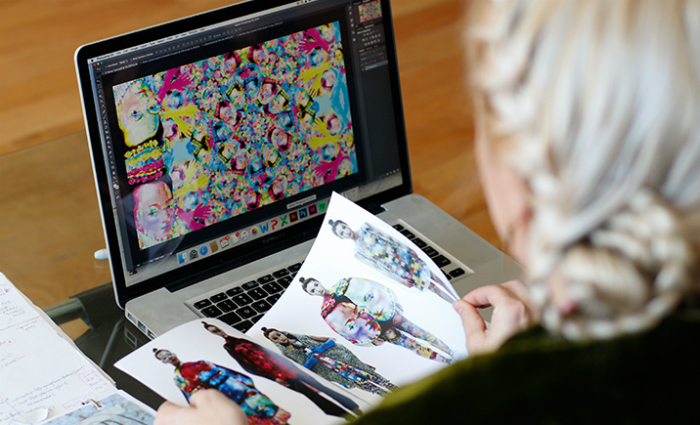Adobe has launched a textile design plugin to its Photoshop software called Adobe Textile Designer, which aims to simplify designing repeatable patterns.
Speaking about overlap opportunities for printers with graphic designers who may not have experience in textiles, Mike Scrutton, director for print technology and strategy at Adobe, says, “We have tried to make it easier for Photoshop users to make that transition. It has been useful for printing on textiles, and in the sign and display market, for people printing wallpapers.
“The transition from printing onto paper to wall coverings, and decor, is a smaller jump. But you need certain skills to design repeatable patterns, even if it is gift wrap. We have tried to make that easier, giving print shops an opportunity to move into new areas.”
Mark Lewiecki, senior product manager for Adobe, says, “Adobe Photoshop is an indispensable tool for fashion and décor artists to translate their vision into an eye-catching design and a printable pattern. However, even with the power of Photoshop, repeating artwork often means repeating steps, which can be cumbersome, and can undermine the creative impulse. The designer must work on the core tile and the overall pattern, simultaneously paying close attention to both the tree and the forest. Changes to colours and shapes in the core tile must be meticulously propagated to each unit in the full pattern. A late change may mean going back to square one and starting over.
“Designers can build and preview repeating patterns, define separations, and work with colourways, all within Photoshop, while keeping every element editable, and reversible, until the design is ready for printing. Like most Adobe Creative Cloud applications, Adobe Textile Designer supports non-destructive elements with independent layers, adjustments, filters, and allowing users to place an Illustrator smart object (vector) in a Photoshop design that can be edited later. After a design is ready to print, designers can save their work in various formats, and can include XMP metadata in their output files that will be used in the fabric production process.”
Scrutton adds, “Designers can be creative today, without worrying how they will print tomorrow. Adobe Textile Designer is flexible to allow traditional screen and engraved roller printing, as well as the latest digital techniques.”


